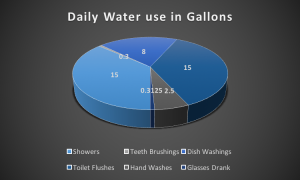- According to the NATHAN world map of natural hazards, my hometown, Hershey Pa is at risk of increased rainfall, hailstorms, extratropical storms, and tornadoes. Hershey is also in one of zones that are affected by El Nino and La Nina. The affect is fewer storms and warmer climate (El Nino only), which could be a good or a bad thing. Pennsylvania appears to be in the zones that have experiences higher than average temperatures and rainfall in the period of 1987-2007. The NATHAN world map of natural hazards seems to be well suited for this task, considering the extensive detail of the report and seemingly credible sources it uses.
2. Terror Attack (bombing) in Turkey Bus Terminal
As recent events have shown, no country, state, or city is safe from terror attacks. Located closely to Harrisburg, the capital of Pennsylvania, Hershey could be at risk of a similar terrorist attack. Personally, I don’t believe Hershey, PA would be a top target for terrorists, so I would say there is a low/ medium-low possibility that an event this tragic this would occur in Hershey.
The scale of this event was relatively small, as the attack took place in a bus terminal, killing 4 and injuring 14 others. The scale of the disaster is very small, since it was just one bus terminal, but if a bombing were to occur in an area of 14.4 miles, the size of Hershey, it would be a disaster, with thousands of deaths and injuries.
Since this disaster is directly related to human deaths, the impact on the population would be considerable large. I don’t think residents in Hershey would have different levels of vulnerability in a terrorist attack, other than unfortunately being in the wrong place at the wrong time. Since Hershey is a tourist location, tourists could be more vulnerable if they are visiting Hershey Park. The human factor of age could lead to a disproportionate impact since many tourists are parents and children. The factor of wealth also comes into play for disproportionate effects since tickets for an amusement park like Hershey Park are expensive. Vulnerability to a terrorist attack could be reduced by increasing security technologies and physical presence throughout the park.
3. Other natural hazards that threaten Hershey are flooding, and tornadoes (ready.gov). Tornadoes have become an increasing threat throughout central Pennsylvania over the past 10 years. Three tornadoes occurred in towns right around Hershey last summer that destroyed many homes and buildings (pennlive). Five years ago Hershey experienced an anomaly in post-hurricane storms. I remember water flooding the town in areas up to 8 feet high. We could not go into town, as it is the lowest level elevation in the area. As a result, we had to drive further distances to go to the store for over a week. The flooding destroyed many buildings and left the town a mess with mud, branches, and other litter that washed into the streets (personal experience). There is a risk that this could occur again if post-hurricane storms are severe enough.
Resources:
https://www.ready.gov/pennsylvania
http://www.pennlive.com/midstate/index.ssf/2015/07/weather_service_confirms_3_tor.html
personal experience, summer 2011
4. To reduce vulnerability to natural disasters in Hershey, there should be a group within the township administration responsible for monitoring and early detection of potential threats. I know we do not currently have a prevention team for natural disasters, so this would be a good first step. In addition, building resilience in non-disaster times would be helpful for town sustainability to disaster. This is something that I, and everyone in the community can help do. By preparing our homes, schools, and stores for floods and tornadoes, we can hope to remain safe from these known threats. In addition, when these disasters occur, we can help rebuild the town as a community, strengthening community bonds, and helping those affected. A team led by the town administration for these emergency responses and clean-ups would keep the process well- organized.



